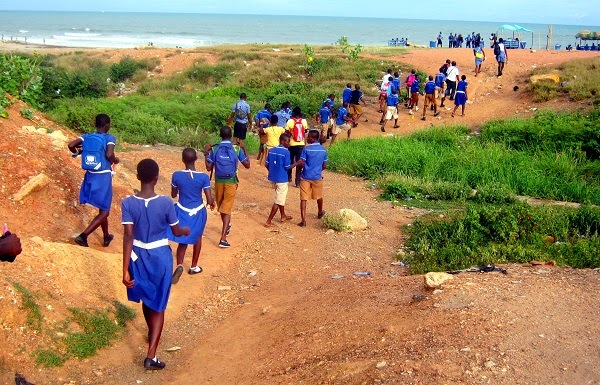 | |
| Supreme Court |
As always, the night we left was a rainy one. Students arrived early, dressed well in neatly pressed uniforms, sporting their favorite coats and accessories. As they waited in the nearby Anglican Church before it was time to go, more and more people from Humjibre came to the roadside to see the students off. Families and neighbors of many of the students were present, as well as a group of GHEI Scholarship and former YEP students who had previously participated in the tour and many primary students who hoped to one day go themselves.
 |
| University of Ghana Legon Institute of African Studies |
A little before sunrise, the bus pulled onto the University of Ghana’s main Legon campus at the northern end of Accra. As students woke up, they stepped outside and got their first glances of the school’s immaculately landscaped colonial campus. The day’s first stop included guided tours of the museums at the Institute of African Studies and Department of Archaeology, where students were shown artifacts from West Africa’s rich cultural history.
 |
| Terminal at the Accra International Airport |
Transitioning to a more traditional field trip venue, we next went to the Supreme Court. The students were given a tour by a particularly interesting and humorous law librarian. They learned about the Court’s history, different courts in Ghana, and types of cases that can be tried. After the Supreme Court, we went to the Accra Sports Stadium. The stadium tour included the tennis courts and a gym for indoor games. A table tennis tournament was underway. Afterwards students were brought down to the national football pitch where they learned about Ghana’s team, the Black Stars, and were given a talk by the engineer who designed the pitch.
 |
| Accra Sports Stadium |

Almost everyone agreed that while the other stops were more educational, the beach was by far the highlight of the tour. Sandra, one of our Form 3 students, who has now been on three GHEI Youth Learning Tours, explained that this one was her favorite because the two previous tours did not include a chance to touch the ocean. Although they live in a coastal country, most Humjibre students have never been to the water. This first interaction was exhilarating, awe-inspiring and reminded students of the opportunities that lay in front of them.
After an exhausting day, it was time to find something to eat and head home to Humjibre. In just a little over 24 hours, the students traveled from Humjibre to Accra and back. Their trip included a diverse range of stops on the way, learning about higher education and culture at the University of Ghana, the wonders of aviation at the airport, government and history at the Supreme Court, athletics at the Sports Stadium and, all of the glories of the beach.

Each year GHEI hosts a Youth Learning Tour excursion to a different location in Ghana. This year, the tour would not have happened without the help of those who supported us. Boarding the bus to travel home, it was clear that we pulled off a near-perfect trip that our students will not easily forget.







